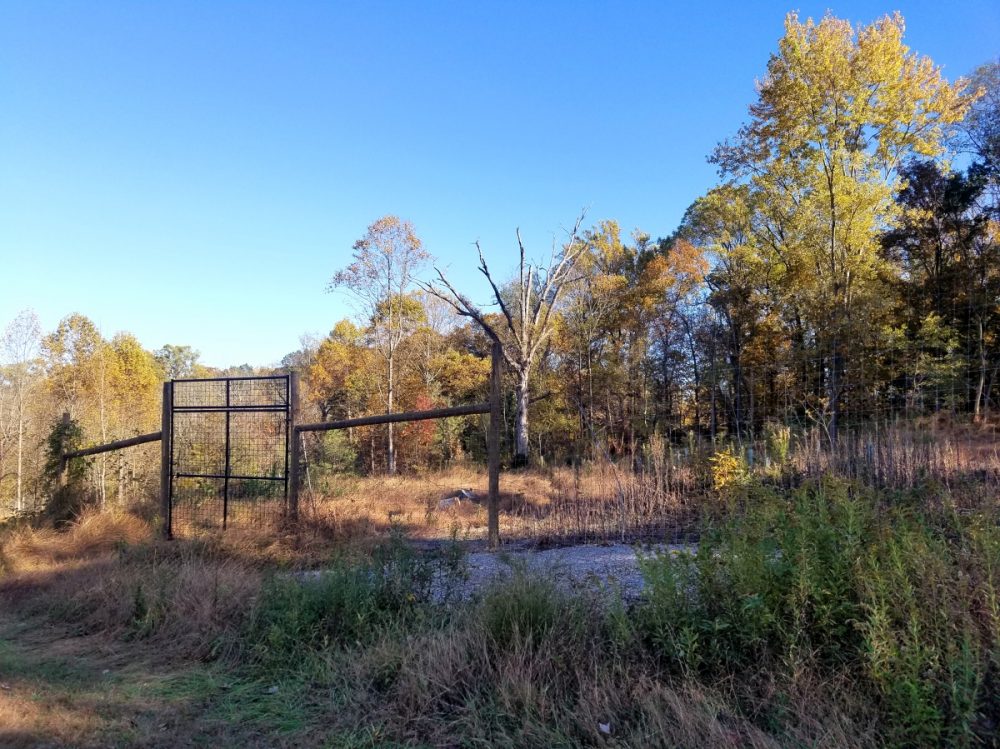This past winter, Executive Director Chris Mendel reached out to members and friends to fund a major reforestation project in the wake of the devastation wrought by the emerald ash borer beetle (EAB) since its arrival in 2014. Among the many areas of the Trust affected by ash mortality, none were more noticeable or more problematic than Management Woods, a 3-acre research plantation almost entirely composed of white ash trees. Thanks to the generosity and dedication of our members, the Trust was able to quickly begin healing the wound opened by EAB.
The first step of the healing process was major surgery, the removal of nearly a thousand dead and dying ash trees. Although standing deadwood can provide important habitat for a wide range of organisms, the density of dead trees in Management Woods would have stunted saplings and served as a trellis for invasive vines to spread. Stewardship staff sawed and hauled throughout the winter, taking advantage of the frozen ground to avoid erosion and soil compaction caused by falling trees and heavy machinery.
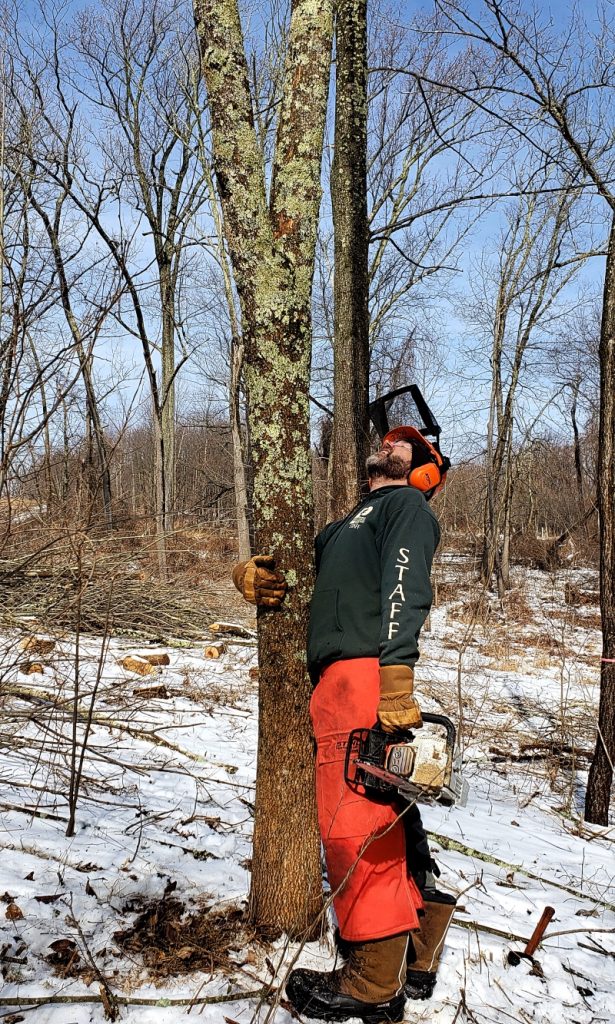
Lead Horticulturalist Chris Dartley lines up his next cut.
Once the dead and diseased wood was removed, the next step was to erect a proper deer fence to protect new trees as they fill in the scarred landscape. A deer fence had been part of the original research plantation, which aimed to compare the protection provided by fencing with the protection provided by cheaper, easier to install plastic tree tubes.
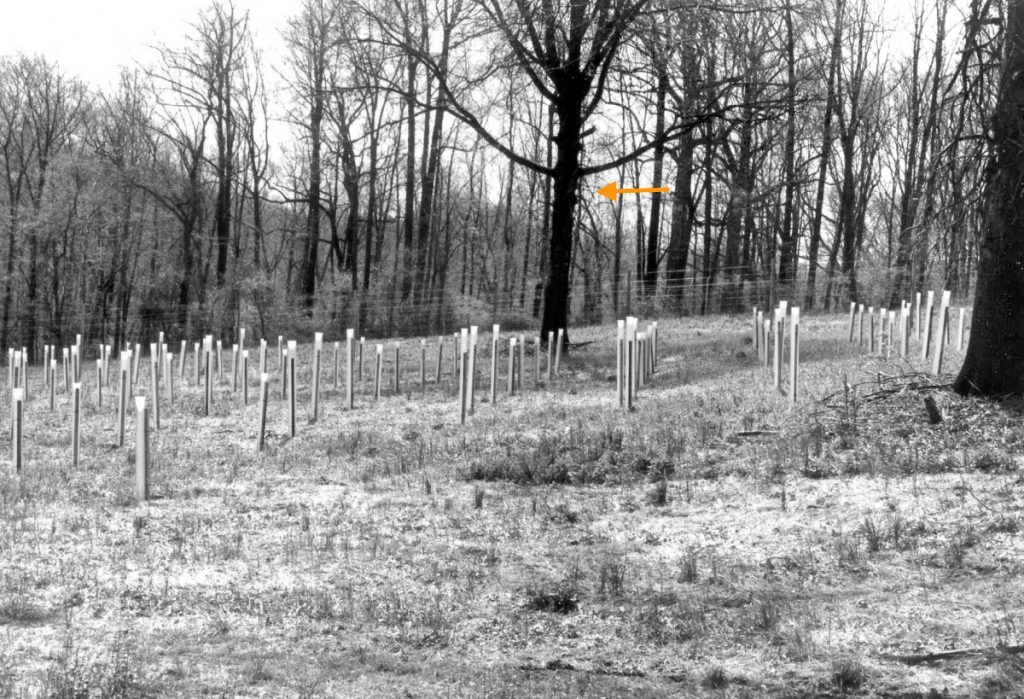
Management Woods in 1990 with tube field and original exclosure.
While the plastic tree tubes proved excellent protection for some tree species, they were too hot and cramped for others. The fence provided critical protection for the young plantation in the first decade as they developed above deer browse height, but storm damage over the next couple decades left the fence badly in need of replacement. Thanks to the support of our community, the Trust was able to contract outside help to construct a new fence that encompasses the original fenced area and the adjacent tube field. This will allow a much fuller range of native species to be included when the site is replanted. A side benefit of the renewed deer exclosure is the opportunity for PERT and Bryn Athyn College to expand their long-term research collaborations to investigate the role that other herbivores play in urban forests—it may be that overabundant squirrels and chipmunks are also to blame for stunting forest regeneration.
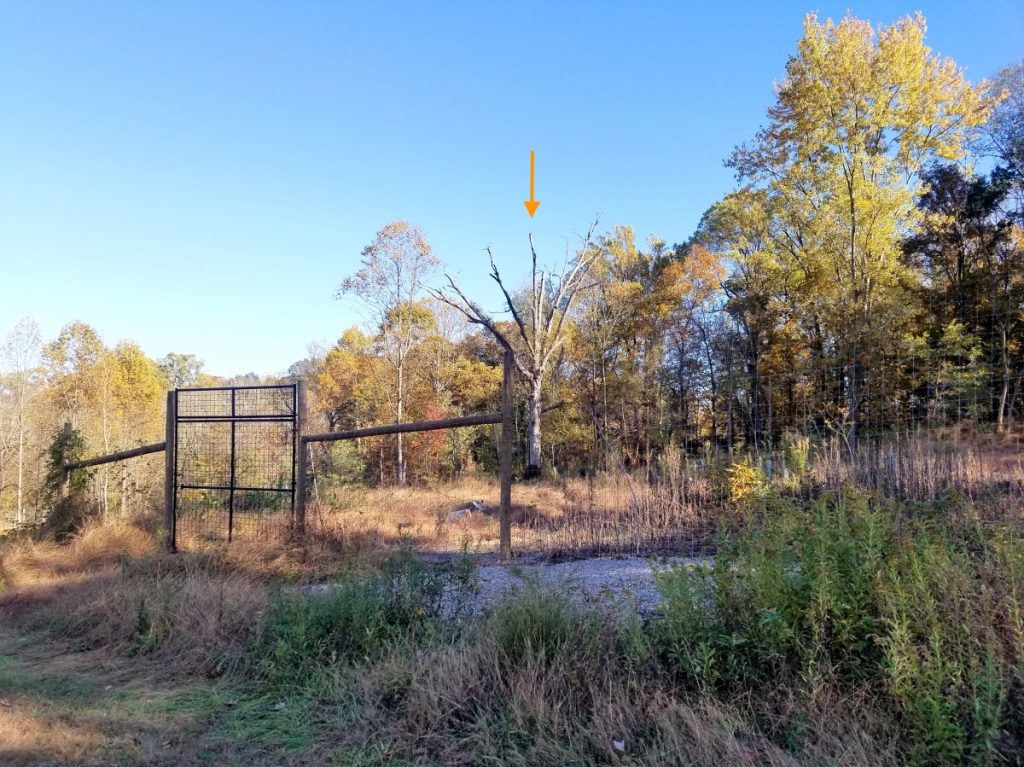
Management Woods in 2019 with expanded fence. Arrow pointing to same tree as 1990 photo.
Though the infection has been removed and the wound has been bandaged, Management Woods requires special nourishment to jump-start recovery. This spring the Trust will be reaching out to friends new and old to plant 750 trees and shrubs. These plants, costing ten thousand dollars in total, will be purchased with funds from a National Fish and Wildlife Federation 5-Star grant secured in collaboration with Pennsylvania Horticultural Society and the MontCo Conservation District. The new planting design includes 32 native species carefully selected to maximize food and shelter for native insects and birds while fitting in with the topography, soil conditions, and dominant tree species of the surrounding landscape.
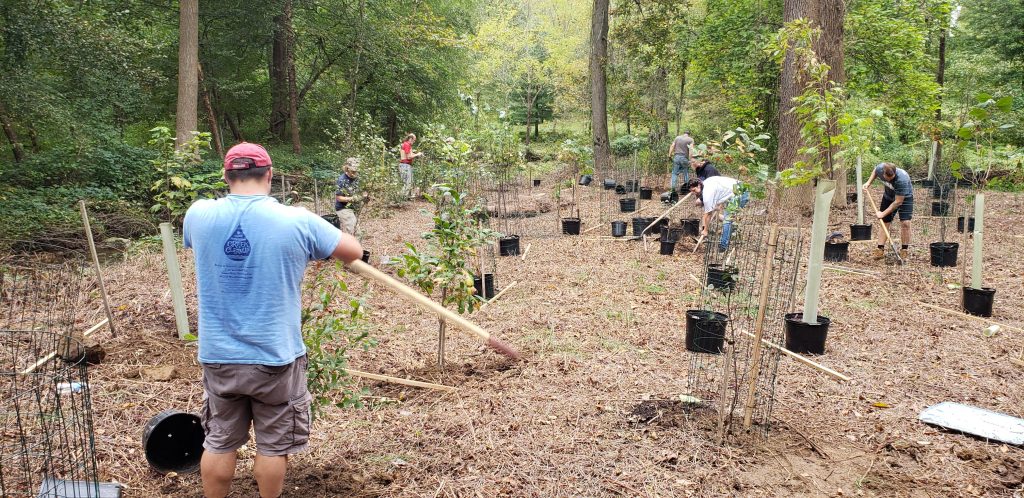
Volunteer planting at PERT, October 2018. Our community LOVES to plant trees, but planting is only the first step…
Fencing can protect young trees from hungry deer, but watchful eyes and willing hands are the only way to help the new Management Woods grow above the ubiquitous tangle of invasive vines and shrubs. Starting with Management Woods, the Trust plans to build on the success of our Free-a-Tree and Streamkeepers programs to train a reliable corps of ReForesters. These dedicated volunteers will augment the attention that our limited staff currently provides to each of our many reforestation projects. As with Streamkeepers, each ReForester will take ownership of a reforestation site, performing monthly checks on the health of their trees, providing routine care, and working with Trust staff to address major issues like storm damage. An information and training session will be held April 25, 2020. Please consider attending if you want to make sure these woods not only survive but thrive!

